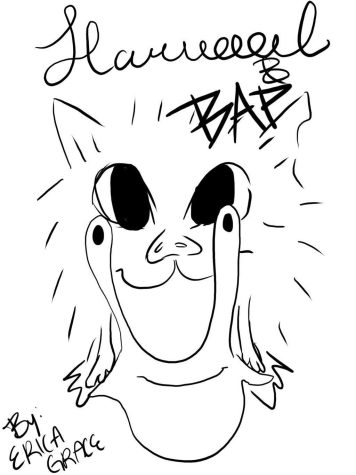Spider-Man: Into the Spider-Verse Review
March 16, 2019
Spider-Man: Into the Spider-Verse Review
Nellie Shih ’19, Arts & Entertainment Editor
Heartfelt and visually stunning, Spider-Man: Into the Spider-Verse has swept this past awards season, including the Academy Award, BAFTA, and Golden Globe – all for Best Animated Feature Film. The film follows teenager Miles Morales, who discovers that he is one of many Spider-Men hailing from alternate realities. Currently sitting at a 97% on Rotten Tomatoes, Spider-Verse differs from the other Spider-Man films as it marks the first appearance of Miles in a feature film.
The film stars Shameik Moore (Dope, The Get Down) as Miles, New Girl’s Jake Johnson as Peter B. Parker, and actress-singer Hailee Steinfeld as Gwen Stacy. The film has received critical acclaim for its characters and voice acting – especially the (unlikely) relationships Miles forms with the other characters. Miles’s relationship with his father, voiced by Atlanta’s Brian Tyree Henry, is strained as his father is a cop who views Spider-Man as a menace. This relationship is contrasted with Miles’s bond with his uncle (Moonlight, Luke Cage, and Green Book’s Mahershala Ali), with whom Miles sneaks out to paint graffiti. Finally, Miles finds an unlikely and unwilling father figure in Peter B. Parker, whom voice actor Jake Johnson describes as “The Karate Kid’s Mr. Miyagi, if Mr. Miyagi doesn’t know anything.” A central aspect of the film addresses the expectations from Miles’s family and mentors. In the powerful moment when Miles feels the most lost, he realizes that he is not alone, which grants him the confidence to take a leap of faith. The film also features the voices of comedian John Mulaney, Nicolas Cage, Chris Pine (Star Trek, Wonder Woman), and even Post Malone in a small cameo part. Author Jason Reynolds also makes a cameo appearance in Miles’s contacts on his phone; Reynolds has written a Miles Morales Marvel Comics novel.
The film’s animation and design is also quite impressive – the style of the film is inspired by traditional hand-drawn comic books. Up to 177 animators were working on the film at a time, with the goal of making the film look like a living painting. The film’s design is is truly incredible – it gives off the impression of being in 3D without being distracting or disorienting. Each character has a specific design, and characters from different dimensions are each reminiscent of a different comic style. There was an incredible attention to detail on the animators’ part, as they used a vibrant color palette to shade and highlight with dots and patterns of different sizes. The most visually appealing frames of the film take place during the night on the streets of New York – the blue-grey sky is contrasted by the bright headlights of cars and billboards. The animators clearly had a blast designing the New York of Miles’s universe, with PDNY instead of NYPD, Chance the Rapper wearing a 4 hat, and Coca-Soda instead of Coca-Cola.
Writer Phil Lord and producer Christopher Miller have identified a goal for their film: to “Inspire young people to become heroes. Inspire grown-ups to help them do it. And remind us all that you don’t need to be bit by a radioactive spider to do your part. You are powerful, and we are counting on you.” Spider-Verse’s target audience is evidently the younger generation, but with the storyline, humor, visuals, and message, there’s something for everyone. I believe that the film is deserving of all of the praise it has received, and I highly recommend it to anyone. Spider-Verse is currently still in theaters.









